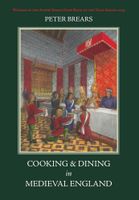Advertisement
Pottage Utensils
Appears in
By Peter Brears
Published 2008
Pottage is a greatly maligned and misunderstood food. It is frequently portrayed and recreated by re-enactors as a single dish. ‘This’, they exclaim, ‘is pottage!’ – thrusting forward a bowl of grim, grey and gritty gruel, unskimmed, smoke-flavoured and foul. Any medieval cook who served such a mess would have been soundly disciplined or, perhaps even worse, made to eat it.
In fact, ‘pottage’ is a simple word having but a single meaning: ‘that which is cooked in a pot’. This encompassed hundreds of different dishes, made of every conceivable ingredient, ranging from the simplest plain-boiled cereal gruels to the richest and most flavoursome of game stews. At peasant level, a few small pots would produce the pottages required to serve the complete dietary needs of an entire family, while in noble kitchens a multitude of pots of perhaps 3 to 10 gallons capacity would be used to cook the great variety of dishes served at every meal. Before considering the various recipes, it is first necessary to gain some knowledge of the cooking pots, and the manner in which they were deployed.

